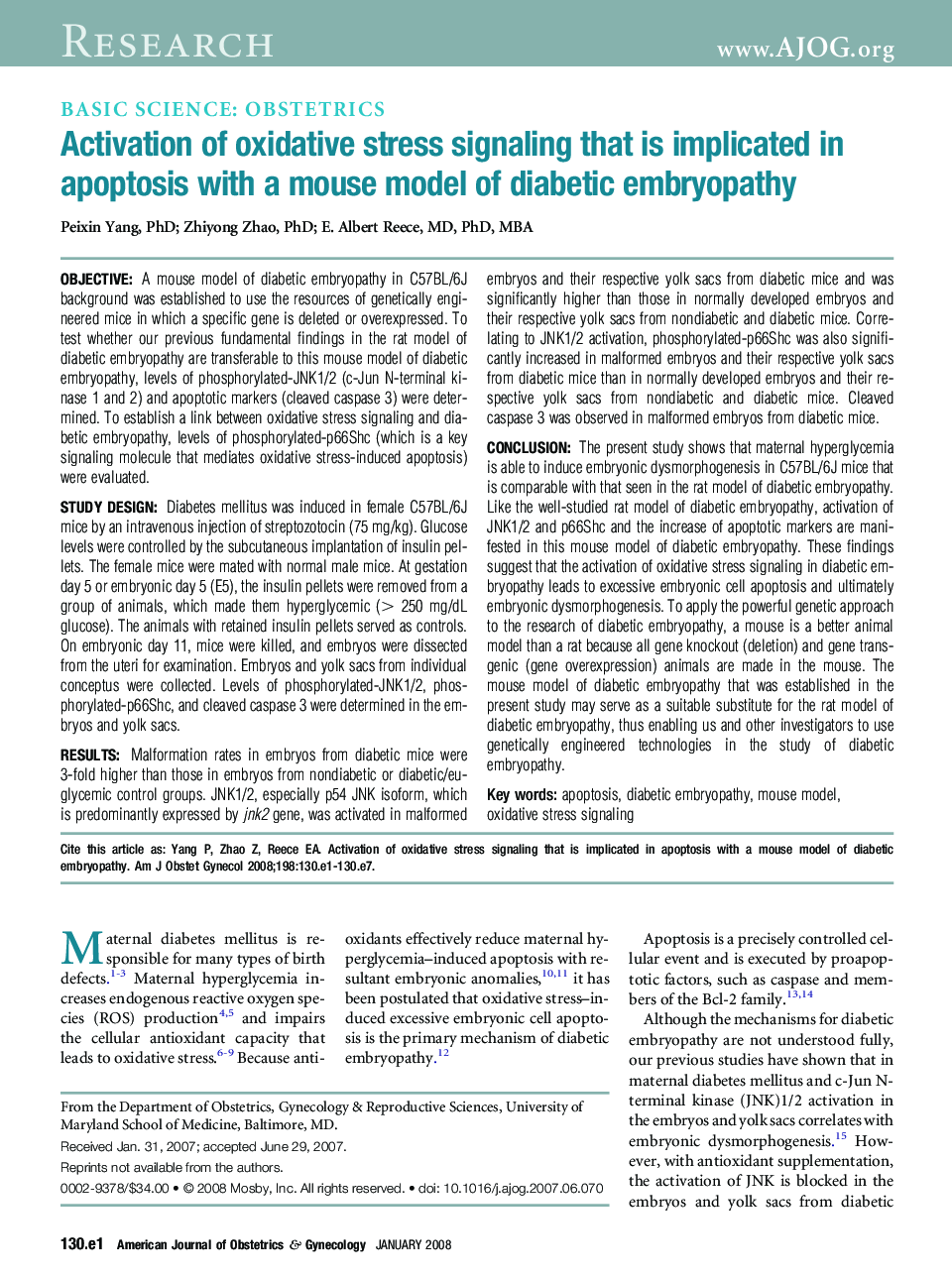| Article ID | Journal | Published Year | Pages | File Type |
|---|---|---|---|---|
| 3437980 | American Journal of Obstetrics and Gynecology | 2008 | 7 Pages |
Abstract
The present study shows that maternal hyperglycemia is able to induce embryonic dysmorphogenesis in C57BL/6J mice that is comparable with that seen in the rat model of diabetic embryopathy. Like the well-studied rat model of diabetic embryopathy, activation of JNK1/2 and p66Shc and the increase of apoptotic markers are manifested in this mouse model of diabetic embryopathy. These findings suggest that the activation of oxidative stress signaling in diabetic embryopathy leads to excessive embryonic cell apoptosis and ultimately embryonic dysmorphogenesis. To apply the powerful genetic approach to the research of diabetic embryopathy, a mouse is a better animal model than a rat because all gene knockout (deletion) and gene transgenic (gene overexpression) animals are made in the mouse. The mouse model of diabetic embryopathy that was established in the present study may serve as a suitable substitute for the rat model of diabetic embryopathy, thus enabling us and other investigators to use genetically engineered technologies in the study of diabetic embryopathy.
Related Topics
Health Sciences
Medicine and Dentistry
Medicine and Dentistry (General)
Authors
Peixin PhD, Zhiyong PhD, E. Albert MD, PhD, MBA,
